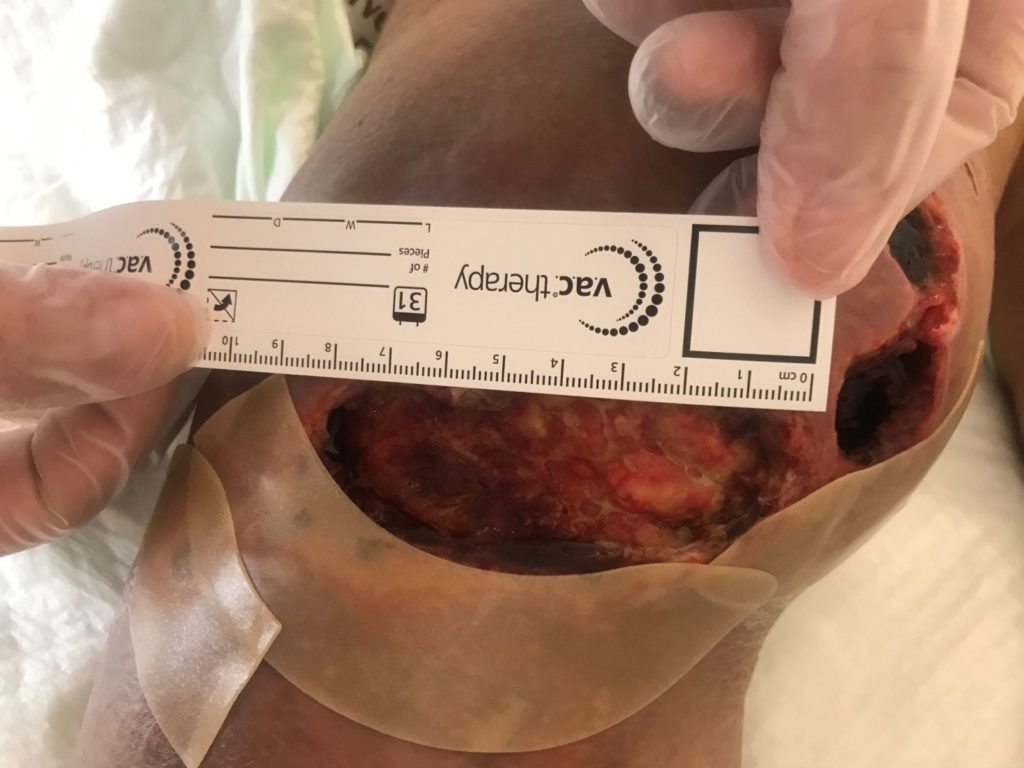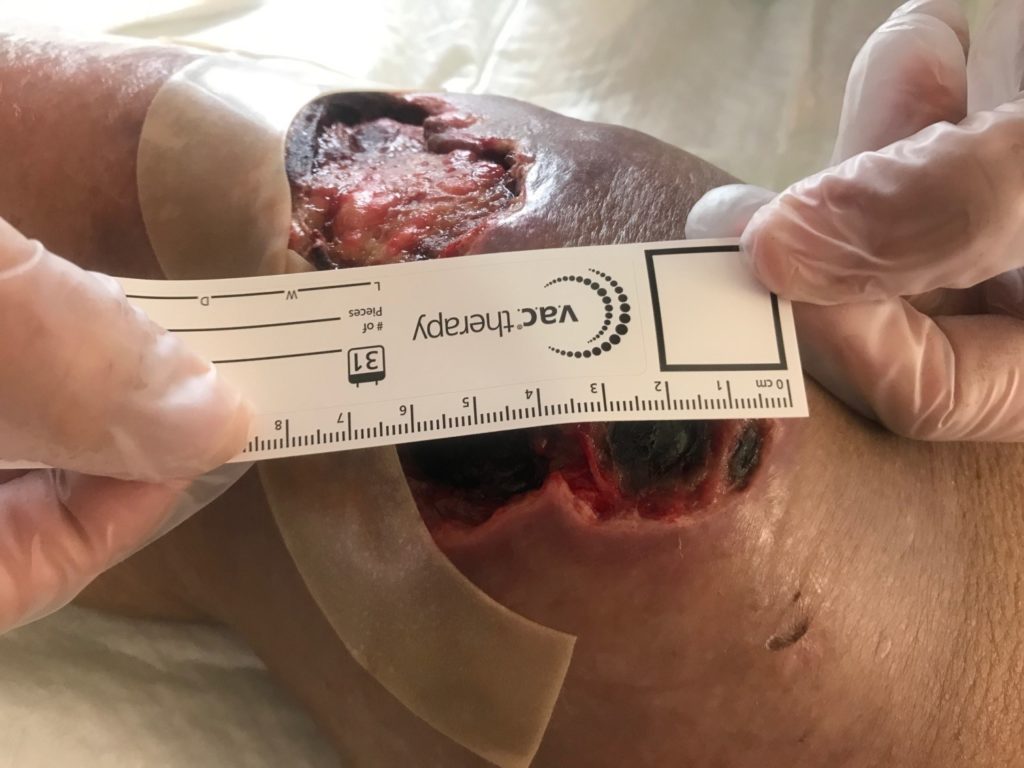Case Study
Veraflo® therapy: Therapy with instillation: regarding a case
Carmen Rodriguez Saavedra and Núria Viader Vives
Qualified nurses. Hospital de Palamós
Introduction
Negative pressure therapy (NPT) with instillation offers an important advance for the management of complex open wounds by associating the instillation of a topical solution to the benefits of NPT.
Patient
79-year-old woman admitted with anasarca due to decompensated chronic kidney failure.
Furthermore, hemarthrosis secondary to a fall 20 days before with anemization requiring a transfusion of red blood cells and withdrawal of oral anticoagulants.
Allergy to the acetyl-cysteine excipient.
No toxic habits.
Autonomous for daily activities.
Pathological history
HBP and DLP in treatment
Chronic polyarthritis
Chronic KF
Cardiac arrhythmia due to atrial fibrillation
Narrow spinal canal
EEII D septic shock originating in soft parts 6 months ago with positive culture for Pseudomonas and MARSA
Start of treatment
At the right knee level there was an open wound 8 cm wide by 5 cm long in the anterior area.
2 additional wounds 3 cm in diameter in the inner lateral area, both communicating and fistulated on 15 cm to the internal thigh. The cavity is occupied by a hematoma. Fragile but preserved perilesional tissue. (Figure 1 and 1.A)
The first two days of admission, it was washed with physiological serum by removing non-viable tissue and applying wet care with gauze bandage.
Initiating NPT treatment with saline instillation was considered. The initial guideline was to instill 20ml saline every 4 hours with 20 min dwell, continuing with a negative pressure of 85 mmHg.
Instillation was sustained for a week with only 2 complete treatments.
Clean wound with granulation tissue with decreased size and depth (Figure 2)
NPT without instillation was continued for 10 days at 100mmHg (3 treatments)
Border approach was performed with local anesthesia (Figure 3).
NPT care was continued for another week (2 treatments) (Figure 4)
After 25 days of admission, she was discharged to home care with a portable NPT device and a total of 5 outpatient hospital treatments were performed. She showed wound resolution up to the epithelial phase (Figure 5).
She was discharged from the hospital’s wound unit to continue with the usual care at her primary daycare center.
Economic valuation
Should the usual treatments have continued for the first two days of admission, daily care with cleaning and debridement of the non-viable tissue would have been necessary. The cost of material, staff time and hospital admission time calculated would have been EUR 11,527.03. Discharge to home care is not usually considered until the beginning of epithelization, approximately 43 days after admission with daily humid treatment.
With NPT, a total of 8 hospital treatments were performed during the 25 days after admission plus 4 additional outpatient treatment after discharge. The cost of 25 hospital days plus material and staff for the 12 treatments after discharge is EUR 6,843.70.
Savings with the negative pressure therapy amount to EUR 4,683.33.
Results
The use of NPT is more effective than the humid care, both with regard to cost and patient quality of life.
Discussion
Due to the characteristics of the wound, cleaning was considered from the entrance to the operating room but it was ruled out due to the acute situation of the patient.
NPT has many well-known properties such as, stimulation of granulation tissue, edema reduction, management of over-exudation and decreased bacterial colonization. In association with the instillation of a topical solution, it has the potential to increase self-limiting mechanical debridement, and can even reduce biofilm.
We could say that its greatest asset is to shorten wound healing time, surgical interventions and hospital admission time, leading to a reduction of health expenses.





